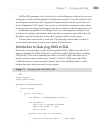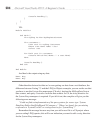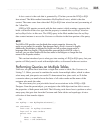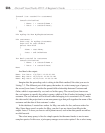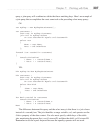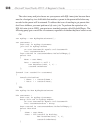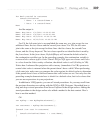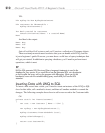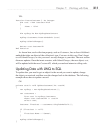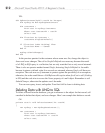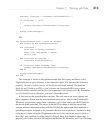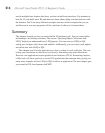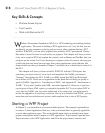
Chapter 7: Working with Data 211
VB:
Function InsertCustomer() As Integer
Dim cust = New Customer With
{
.Name = "Jim"
}
Dim myShop As New MyShopDataContext
myShop.Customers.InsertOnSubmit(cust)
myShop.SubmitChanges()
Return cust.CustomerID
End Function
As shown here, each collection property, such as Customers, has an InsertOnSubmit
method that takes an object of the collection’s type, Customer in this case. Don’t forget
to call SubmitChanges, or else you won’t see any changes to your data. The next section
discusses updates. Once the insert executes, with SubmitChanges, the new object, cust,
will be updated with the new CustomerID, which you read and return to calling code.
Updating Data with LINQ to SQL
To update data, you need to get an object for the record you want to update, change
the object you received, and then save the changes back to the database. The following
example shows how to update a record:
C#:
private static void UpdateCustomer(int custID)
{
var myShop = new MyShopDataContext();
var customers =
from cust in myShop.Customers
where cust.CustomerID == custID
select cust;
Customer firstCust = customers.SingleOrDefault();
if (firstCust != null)
{
firstCust.Name = "James";
}
myShop.SubmitChanges();
}



